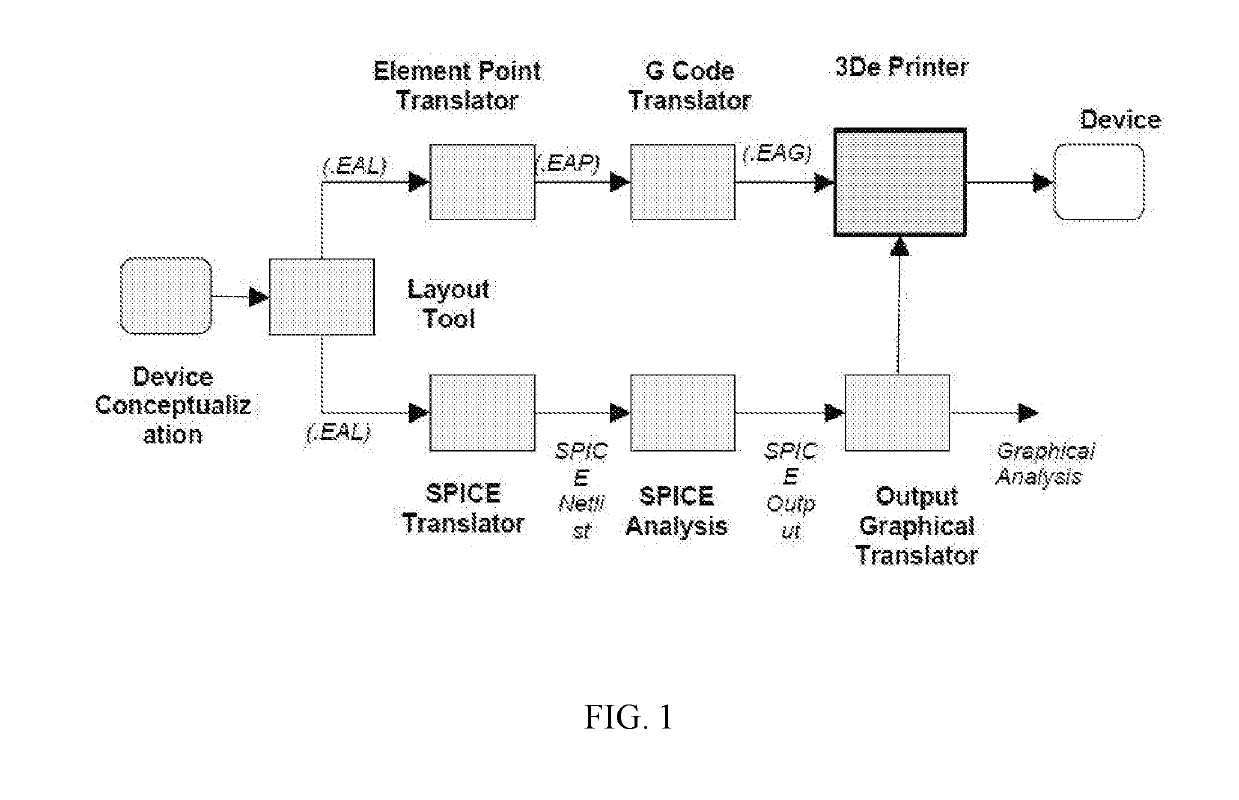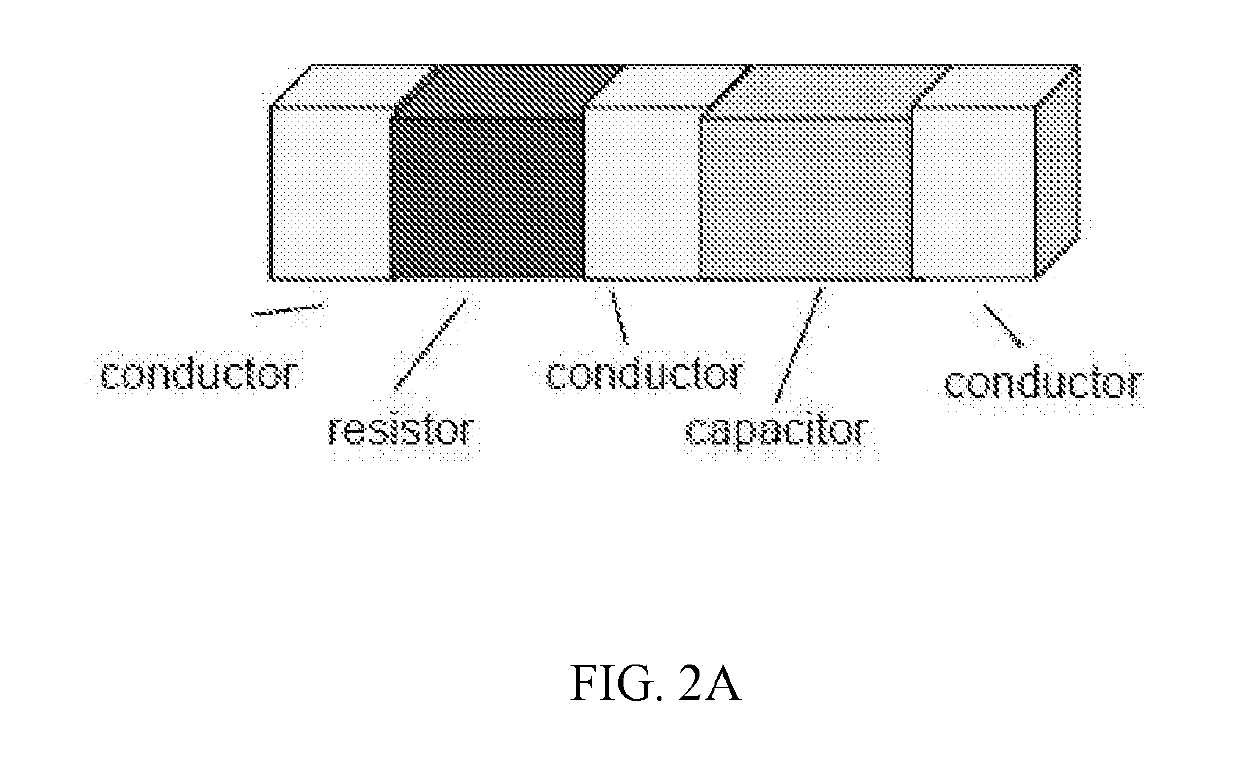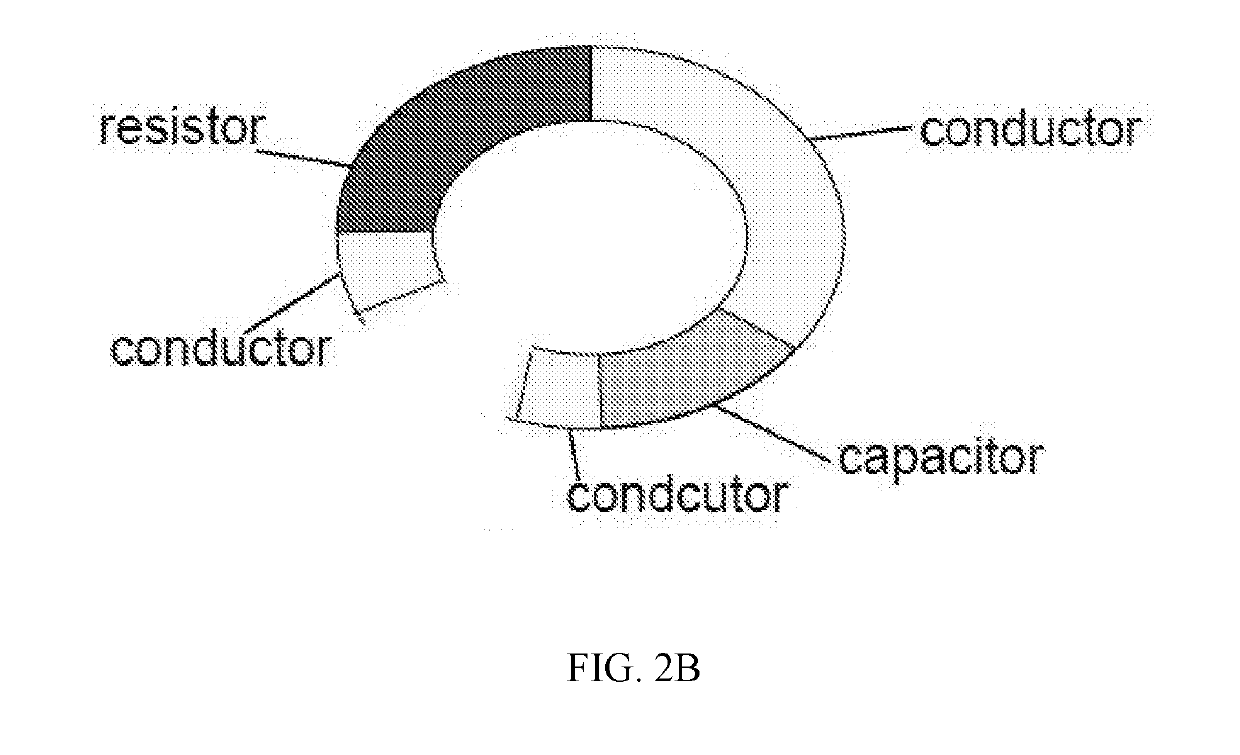Systems and methods of additive printing of functional electronic circuits
a functional electronic circuit and additive manufacturing technology, applied in the field of additive systems, can solve the problems of affecting the electrical and mechanical properties of materials formed by the additive manufacturing process, affecting the young's modulus of materials, and limited 3d printing processes for electronic devices
- Summary
- Abstract
- Description
- Claims
- Application Information
AI Technical Summary
Benefits of technology
Problems solved by technology
Method used
Image
Examples
second embodiment
Using UV Curable Liquid Epoxy
[0061]Liquid epoxy can affect the conductivity of the semiconductor ink, and may vary in various aspects of the present disclosure. The UV curing intensity and curing time can also affect the electrical properties of a semiconductor ink-based composition, and may vary in various aspects of the present disclosure.
[0062]An exemplary embodiment of the present disclosure is directed to a process of manufacturing an electronic device using ultraviolet (UV) curable liquid epoxy. The process can involve mixing UV curable liquid epoxy with at least one nanopowder to form a mixture, dispensing the mixture on a non-conducting glass surface, curing the dispensed mixture using an UV light emitting diode (LED) source, and melting the cured mixture to a semi-liquid state that is extruded from a print head to form the device. The LED source can have a maximum intensity of about 16 MW / cm2 and duration for the curing can be between about 20 seconds and about 120 seconds....
PUM
| Property | Measurement | Unit |
|---|---|---|
| particle size | aaaaa | aaaaa |
| particle size | aaaaa | aaaaa |
| temperature | aaaaa | aaaaa |
Abstract
Description
Claims
Application Information
 Login to view more
Login to view more - R&D Engineer
- R&D Manager
- IP Professional
- Industry Leading Data Capabilities
- Powerful AI technology
- Patent DNA Extraction
Browse by: Latest US Patents, China's latest patents, Technical Efficacy Thesaurus, Application Domain, Technology Topic.
© 2024 PatSnap. All rights reserved.Legal|Privacy policy|Modern Slavery Act Transparency Statement|Sitemap



